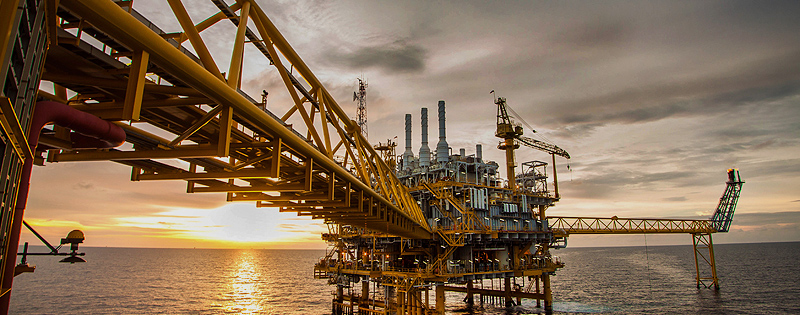Welcome to the forefront of composite and polymer manufacturing with Mechvac Technologies Pvt Ltd’s vacuum pump solutions, expertly engineered and manufactured in India. Our vacuum pumps are meticulously crafted to address the unique challenges of the composites and polymers industry, offering unparalleled performance, reliability, and efficiency. From resin infusion to molding and curing processes, our vacuum pumps play a pivotal role in optimizing production processes, ensuring precision, quality, and consistency in composite and polymer manufacturing.
Key Applications of Vacuum Pumps in the Composites and Polymers Industry
1. Vacuum Infusion and Resin Transfer Molding (RTM)
- Composite Manufacturing: Vacuum pumps are essential in composite manufacturing processes such as vacuum infusion and resin transfer molding (RTM). In vacuum infusion, vacuum pumps remove air from the mold cavity, allowing resin to flow into the reinforcement materials (e.g., fiberglass, carbon fiber) under controlled conditions. This process ensures uniform resin distribution, minimizes voids, and enhances the strength-to-weight ratio of composite parts used in aerospace, automotive, and marine industries.
- RTM Processes: Vacuum pumps create vacuum pressure to draw resin through preforms or dry fiber mats in RTM processes. This method produces high-strength, lightweight composite components with superior mechanical properties and dimensional accuracy. Vacuum-assisted RTM is utilized in manufacturing parts such as vehicle panels, aircraft components, and wind turbine blades, where durability and performance are critical.
2. Vacuum Bagging and Composite Curing
- Vacuum Bagging: Vacuum pumps are used in vacuum bagging processes to compress and consolidate composite materials during curing. By applying vacuum pressure to a sealed bag covering the composite layup, excess resin is squeezed out, and the layers are compacted evenly. Vacuum-assisted bagging ensures strong bonds between layers, reduces resin waste, and improves the overall quality and strength of composite structures.
- Autoclave Curing: In autoclave curing, vacuum pumps evacuate air from the autoclave chamber before applying heat and pressure to cure composite parts. Vacuum conditions prevent air pockets and ensure uniform heat distribution, resulting in aerospace-grade components with precise tolerances and exceptional performance characteristics. Vacuum-assisted autoclave curing is crucial for producing high-quality composite parts used in aircraft fuselages, rotor blades, and structural components.
3. Polymer Processing and Molding
- Injection Molding: Vacuum pumps assist in injection molding processes for polymers by removing air from the mold cavity before injecting molten polymer. Vacuum-assisted injection molding reduces defects like air bubbles and voids, ensuring consistent part quality and dimensional accuracy. This technology is utilized in manufacturing automotive components, consumer electronics, and medical devices that require precise molding and high-quality finishes.
- Thermoforming: Vacuum pumps are used in thermoforming processes to shape heated polymer sheets over molds by creating vacuum suction. This technique produces lightweight, durable parts such as packaging trays, automotive interior panels, and signage. Vacuum-assisted thermoforming enhances production efficiency and allows for complex geometries with excellent surface detail and clarity.
4. Polymer Filtration and Degassing
- Polymer Filtration: Vacuum pumps play a role in polymer filtration systems by creating suction to remove contaminants and impurities from molten polymers before processing. This helps maintain the purity and consistency of polymer materials used in extrusion, blow molding, and other manufacturing processes. Vacuum-assisted filtration improves product quality and reduces maintenance downtime in polymer production facilities.
- Degassing and Drying: Vacuum pumps are used for degassing and drying polymers to remove moisture and volatile substances that can affect material properties and processing performance. Vacuum-assisted degassing ensures that polymers maintain their mechanical strength, thermal stability, and dimensional stability during processing. This technology is essential in producing high-performance plastics for automotive parts, electronic enclosures, and industrial applications.
5. Vacuum Coating and Surface Modification
- Physical Vapor Deposition (PVD): Vacuum pumps create the necessary vacuum environment for PVD processes, where thin layers of metals or ceramics are deposited onto polymer substrates to enhance surface properties. Vacuum-assisted PVD coatings improve wear resistance, corrosion resistance, and aesthetic appeal of polymer components used in automotive trim, electronic housings, and decorative applications.
- Chemical Vapor Deposition (CVD): In CVD processes, vacuum pumps evacuate the chamber to deposit thin films of polymers or functional coatings onto substrates. Vacuum-assisted CVD enhances adhesion and uniformity of coatings, enabling applications such as barrier films, conductive layers, and optical coatings in industries ranging from electronics to medical devices.
6. Vacuum Forming and Packaging
- Vacuum Forming: Vacuum pumps are used in vacuum forming machines to shape heated plastic sheets over molds, producing packaging trays, blister packs, and protective covers. Vacuum-assisted forming ensures precise molding of polymer materials with consistent thickness and surface finish, suitable for food packaging, consumer goods, and industrial applications.
- Vacuum Packaging: Vacuum pumps evacuate air from packaging containers or pouches to create a vacuum seal around products, extending shelf life and preserving freshness. Vacuum-assisted packaging is widely used in food packaging, pharmaceuticals, and electronics to protect sensitive products from moisture, oxygen, and contaminants.
7. Recycling and Waste Management
- Vacuum Waste Extraction: Vacuum pumps assist in waste extraction systems for recycling polymer scraps and trimmings generated during manufacturing processes. Vacuum-assisted waste management enhances efficiency in collecting and processing recyclable materials, reducing production costs and environmental impact in the polymer industry.
- Vacuum-Assisted Material Recovery: In polymer recycling facilities, vacuum pumps are utilized in material recovery systems to reclaim and process post-consumer plastics. Vacuum technology helps separate, shred, and melt recycled polymers for reuse in manufacturing new products, promoting sustainable practices and circular economy initiatives.
The MT Series is an excellent choice Composites and Polymers Industry, offering a range of benefits that can greatly enhance your Composites and Polymers Industry operations:
MT Series benefits: –
Reduce Energy Consumption: The MT Series is designed with energy efficiency in mind, helping to reduce energy consumption during operation. By minimizing energy usage, you can lower your utility costs and contribute to sustainability efforts.
Save on Maintenance Costs: With its robust construction and reliable performance, the MT Series requires minimal maintenance compared to other vacuum pumps. This helps you save on maintenance costs while ensuring consistent operation and longevity of the equipment.
Maximize Operational Reliability: The MT Series is known for its exceptional reliability and durability, providing uninterrupted operation even in demanding packaging environments. With dependable performance, you can minimize downtime and maintain productivity levels.
Increase Production Output: By streamlining the vacuum packaging process and optimizing efficiency, the MT Series helps increase production output. Its high-performance capabilities enable faster evacuation of air from packaging, allowing you to meet higher production demands.
Protect the Environment: The MT Series is designed with environmental sustainability in mind. Its energy-efficient operation and reduced maintenance requirements contribute to lower carbon emissions and environmental impact. By choosing the MT Series, you’re taking proactive steps towards protecting the environment.
MT Series images





